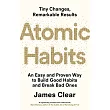Restoring social harmony requires both emotion and the difficult embrace of past felt traumas.
Jeremy A. Rinker provides a clarion call for practitioners to bravely explore human emotions and past trauma. He interrogates current conflict intervention practice--moving past interest-based negotiation and needs-based conflict resolution--and provides a guide for more emotionally mindful and trauma-informed conflict intervention work.
The Guide to Trauma-Informed and Emotionally Mindful Conflict Practice addresses the underattended aspects of emotions and foregrounds historical harms in the work of resolving social conflict. It critically investigates trauma and human emotions as an underexplored resource in addressing local and entrenched community violence and integrates the theory and practice of trauma-informed approaches using cultural framing, storytelling, resilience, and emotional human connection to chart new ways toward peace. This refocusing of peace work is critical for not only conflict resolution but also for overcoming the ossification of polarized social identity formations.



 天天爆殺
天天爆殺  今日66折
今日66折 

























 博客來
博客來 博客來
博客來 博客來
博客來 博客來
博客來 博客來
博客來